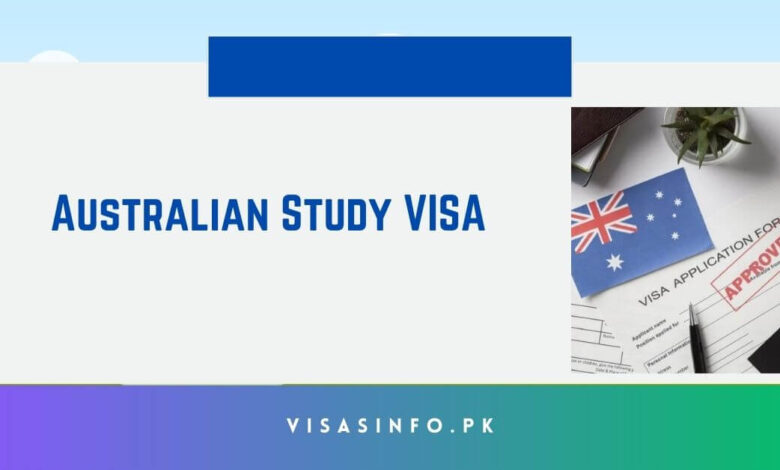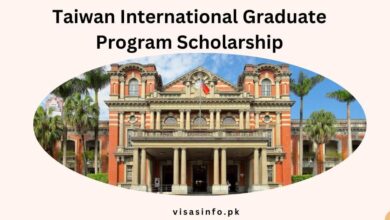Australian Study VISA 2024 – Visit Here

With the conclusion of Semester 2 admissions at universities throughout Australia, students from around the world are now beginning the next critical phase of their voyage to study in Australia—applying for their Australian study visas. This period is characterized by a substantial increase in activity at Australian embassies worldwide, as prospective students complete their preparations for their forthcoming educational opportunities.
The months of May and June 2024 are notably busy, coinciding with the aftermath of the Semester 2 admissions process. Students are actively engaged in the process of submitting their visa applications during this period to guarantee that they can coordinate their travel and accommodation in advance of the commencement of classes in July. This seasonal increase in applications is indicative of the global allure of Australian education and the meticulous planning that international studies necessitate.
This background establishes the foundation for the examination of the complexities of Australian study visas, elucidating the categories, processes, and prerequisites that are associated with obtaining a visa. Understanding the intricacies of each visa type and the scheduling of applications is essential for a seamless transition to studying in Australia as students navigate these administrative procedures.
Which Australian Study VISA Types is a Good Fit for You?
The purpose and eligibility criteria of each of the four categories of Australian student visas available for application submission in 2024 will be examined in this section:
1# Student Visa (Subclass 500) – Most Common
- Purpose: Enables international students to pursue full-time studies in registered courses in Australia.
- Eligibility:
- Enrollment in a full-time course of study at an Australian institution is required.
- Demonstrate the intention to remain in Australia temporarily by fulfilling the Genuine Temporary Entrant (GTE) requirement.
- Submit evidence of adequate financial resources to cover tuition fees, living expenses, and travel.
- Satisfy the health and character requirements.
- Maintain an adequate level of health insurance coverage (Overseas Student Health Cover – OSHC).
2# Training Visa (Subclass 407)
- Purpose: Developed for individuals who require workplace-based training in Australia, this may encompass professional development training programs.
- Eligibility:
- An occupation that qualifies for training and a sponsor who has been approved to provide the training are both required.
- The training must improve the skills of an eligible occupation.
- Satisfy the health and character requirements.
- Submit documentation of one’s financial ability to sustain oneself during the duration of the stay.
3# Temporary Graduate Visa (Subclass 485)
- Purpose: Enables international students who have recently completed their education at an Australian educational institution to temporarily reside, work, and study in Australia.
- Eligibility:
- A qualification that satisfies the Australian Study Requirement must have been completed within the past six months.
- Must be under the age of 50.
- Satisfy the English language prerequisites.
- Possess or have possessed a student visa within the past six months.
- Submit documentation of sufficient health insurance coverage.
- Satisfy the health and character requirements.
4# Student Guardian Visa (Subclass 590)
- Purpose: For parents or guardians who are required to remain in Australia as the guardian of an international student who is studying in Australia on a student visa.
- Eligibility:
- Must be a parent or individual who has legal custody of the student, or a relative who has been nominated by a parent or custodian.
- The pupil must be under the age of 18 or over 18 if they require special support due to a condition.
- Submit documentation of one’s financial ability to provide for oneself and any dependents.
- Satisfy the health and character requirements.
Check Also: Poland Study VISA – Visit Here
Financial Bank Statement Requirements to Apply for an Australian VISA:
If you are a self-sufficient individual, Students who are applying for the Subclass 500 visa must demonstrate that they have access to a minimum of AUD 29,710 annually to fund living expenses, in addition to tuition and health insurance costs, as of May 10, 2024. Other visas may not have specified minimum financial requirements, but they do require evidence of adequate funds to cover your stay.
Is the bank statement requirement suspended for scholarship winners who wish to apply for an Australian study visa?
Certainly, scholarship recipients are eligible to waive the standard financial bank statement requirements when applying for an Australian student visa. Rather, they must submit a scholarship support form, award letter, or sponsorship letter that specifies their financial support. To satisfy visa requirements, these documents must explicitly specify the scholarship’s coverage of tuition, living expenses, and any other benefits.
Although the scholarship documentation is the primary source, students may still need to provide supplementary evidence to address aspects that are not covered in their scholarship, such as:
- Overseas Student Health Cover (OSHC): Evidence that they possess the necessary health insurance for the duration of their visa.
- Return Airfare: Documentation demonstrating their ability to cover the cost of travel back to their native country after their studies are finished unless the scholarship covers the expense.
- Supplementary Living Costs: If the scholarship does not entirely cover living expenses, students may be required to submit evidence of additional funds to satisfy the financial threshold.
Benefits of Australian Study VISA:
- High-Quality Education: Australia is home to some of the world’s most prestigious universities and educational institutions. The nation is recognized for its innovative teaching methods, cutting-edge research, and high academic standards.
- Diverse Course Selection: Australian universities provide a wide variety of courses and programs, such as undergraduate, postgraduate, vocational, and technical education. Students have the opportunity to select from a variety of academic disciplines that are consistent with their career objectives and personal interests.
- Post-Study Employment Opportunities: The Temporary Graduate visa (subclass 485) enables international students to provisionally remain in Australia following their graduation to acquire work experience. This has the potential to improve their career prospects and offer them vital professional experience.
- Pathway to Permanent Residency: Studying in Australia may serve as an avenue to permanent residency. Graduates who possess skills that are in high demand in the Australian job market may be eligible to apply for a variety of skilled migration visas.
- Multicultural Environment: Australia is a multicultural nation with a diverse population. Living in a society that is inclusive and welcoming is advantageous for international students, as it expands their global network and cultural comprehension.
- Quality of Life: Australia provides a secure environment, exceptional healthcare, and public services, all of which contribute to a high standard of living. Sydney, Melbourne, Brisbane, and Perth consistently achieve high rankings in global liveability indices.
- Working While Studying: International students who own an Australian study visa are permitted to work part-time (up to 40 hours per fortnight) during their academic program and full-time during scheduled vacations. This enables students to acquire work experience and support themselves financially.
- Research Opportunities: Australia is renowned for its strong emphasis on innovation and research. Students are allowed to collaborate on innovative initiatives in a variety of disciplines and have access to top-tier research facilities.
- Financial Aid and Scholarships: International students are eligible for a variety of scholarships, grants, and bursaries to assist in the payment of tuition fees and living expenses. These financial aids can reduce the cost of studying in Australia.
- Student Support Services: Australian institutions offer a wide range of support services to international students, such as academic assistance, career counseling, mental health services, and accommodation support. This guarantees a learning environment that is both supportive and positive.
- Global Recognition: Australian qualifications are acknowledged and valued on a global scale. The employability and career prospects of students on a global scale are significantly improved by their graduation from an Australian institution.
- Beautiful Natural Environment: Australia’s beautiful natural environment is renowned for its breathtaking landscapes, which include rainforests, beaches, and distinctive fauna. Students have the chance to experience and appreciate the country’s natural grandeur during their visit.
- Technology and Innovation: Australian universities are at the forefront of technological advancements and innovation. In addition to participating in cutting-edge research and development activities, students are granted access to the most recent technologies.
- Opportunities for Networking: Studying in Australia offers the chance to establish a global network of industry professionals, academics, and colleagues. This network may prove indispensable for future professional development and employment prospects.
- Language Skills: Studying in Australia offers non-native English speakers the chance to enhance their English language skills, which can be advantageous for their personal and professional growth.
Australian Study Visa Application Process and Document Checklist:
To assist you in submitting your application for a student visa to Australia in 2024, the following is a step-by-step process with a document checklist:
- Accept Your Offer: After approving the offer from the Australian institution, obtain your electronic Confirmation of Enrolment (eCoE).
- Establish an ImmiAccount: To submit and oversee your visa application, create an account on the Australian Department of Home Affairs website.
- Acquire the Necessary Documents: Gather all pertinent documentation by the subclass of study visa for which you are applying.
- Finalize the visa application: Attach all necessary documents and complete the visa application form online through your ImmiAccount (https://immi.homeaffairs.gov.au/help-support/applying-online-or-on-paper/online).
- Pay the visa application fee: Please submit the application charge of AUD$710 (https://immi.homeaffairs.gov.au/visas/getting-a-visa/visa-listing/student-500), which may be waived in certain circumstances.
- Application Submission: Review all pertinent information, submit your application, and await a response.
- Monitor and Control Your Application: Utilize your ImmiAccount to monitor the status of your application and respond to any supplementary inquiries for information.
Document Checklist for Australian Study Visa (Subclass 500) and others:
- The Australian study Visa Application Form (157A) has been completed (https://www.vfsglobal.com/Australia/Pakistan/pdf/157a.pdf).
- Valid passport: It must be valid for the entire duration of your visit.
- Confirmation of Enrolment (CoE): A document issued by your Australian educational institution.
- Genuine Temporary Entrant (GTE) Statement: A personal statement that addresses the GTE requirement.
- Financial Evidence: Bank statements or scholarship letters that demonstrate an adequate amount of funds to cover tuition and living expenses.
- Overseas Student Health Cover (OSHC): Evidence of health insurance that is valid for the duration of your visa.
- Results of the English Proficiency Test: If mandated by your institution or visa type.
- Academic and Work Experience Documents: Transcripts, diplomas, CVs, and work references.
- Character and Health Evaluations: Police certificates and medical examinations as necessary.
- Scholarship offer letter or bank statement that specifies the necessary threshold limit.
This exhaustive checklist and streamlined process will guarantee that you are adequately prepared to apply for an Australian study visa.
Frequently Asked Questions:
-
Is an Australian student visa easy to get?
Obtaining a student visa in Australia is less complicated than in other countries. To qualify for a visa, students who wish to continue their education in Australia must satisfy specific criteria.
-
What is the minimum IELTS score for an Australian student visa?
To be eligible for an Australian study visa (subclass 500), a minimum IELTS band score of 6.0 is required.
-
How much bank balance is required for an Australia student visa in 2024?
International students will have to submit confirmation of savings of at least A$29,710 ($19,576) to obtain their visas. This is the second increase in nearly seven months. In October, the minimal savings amount was increased from A$21,041 to A$24,505.



